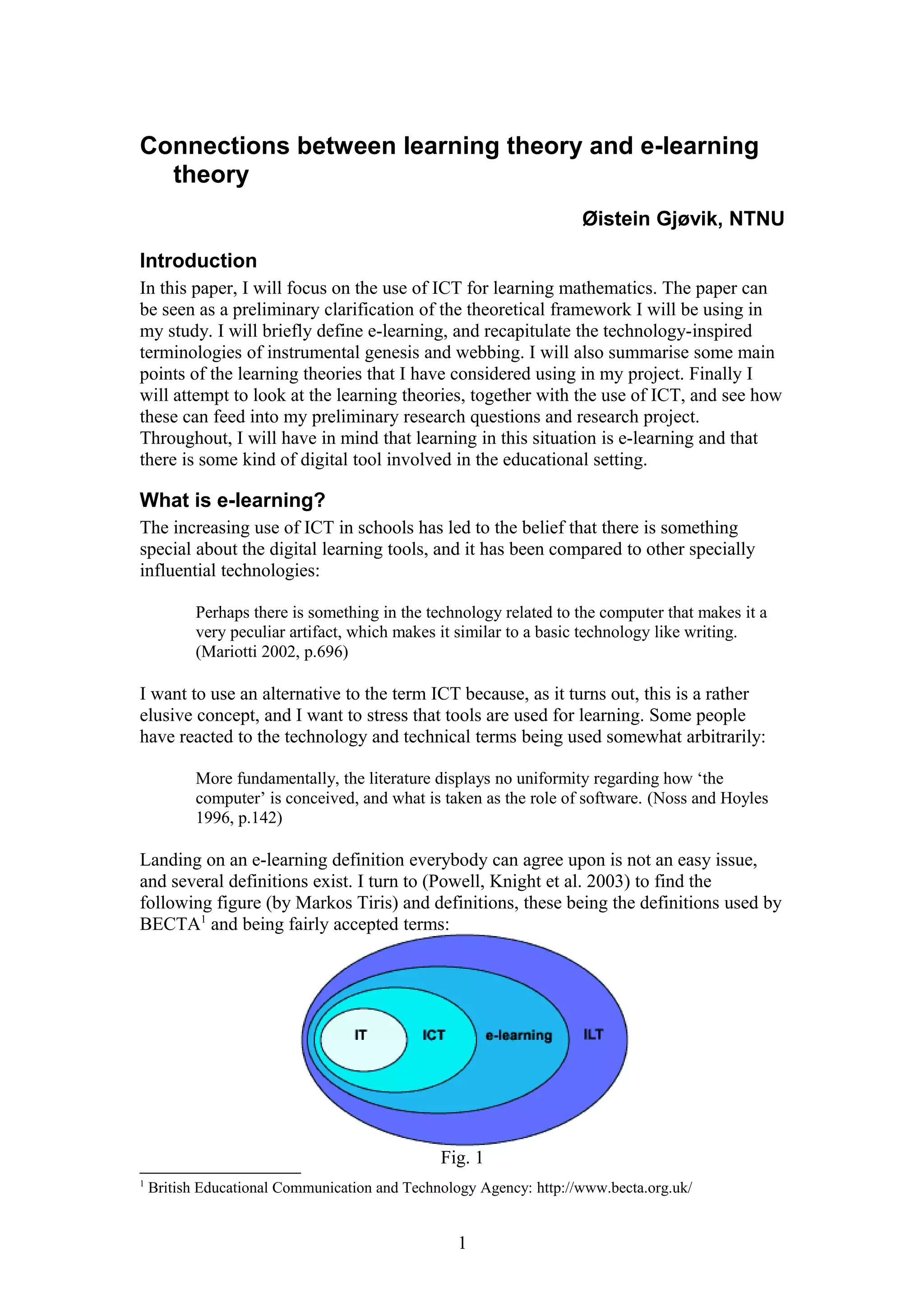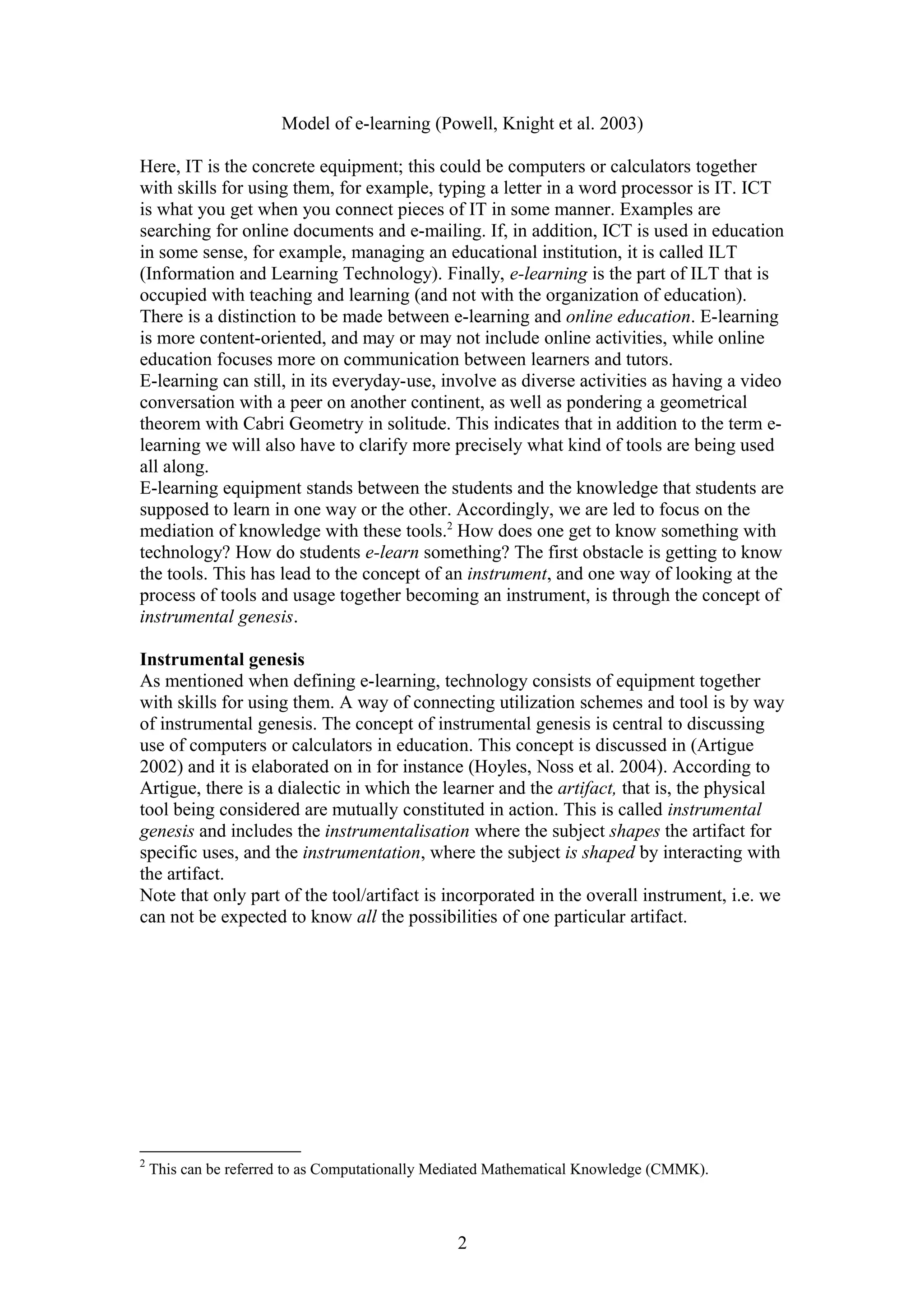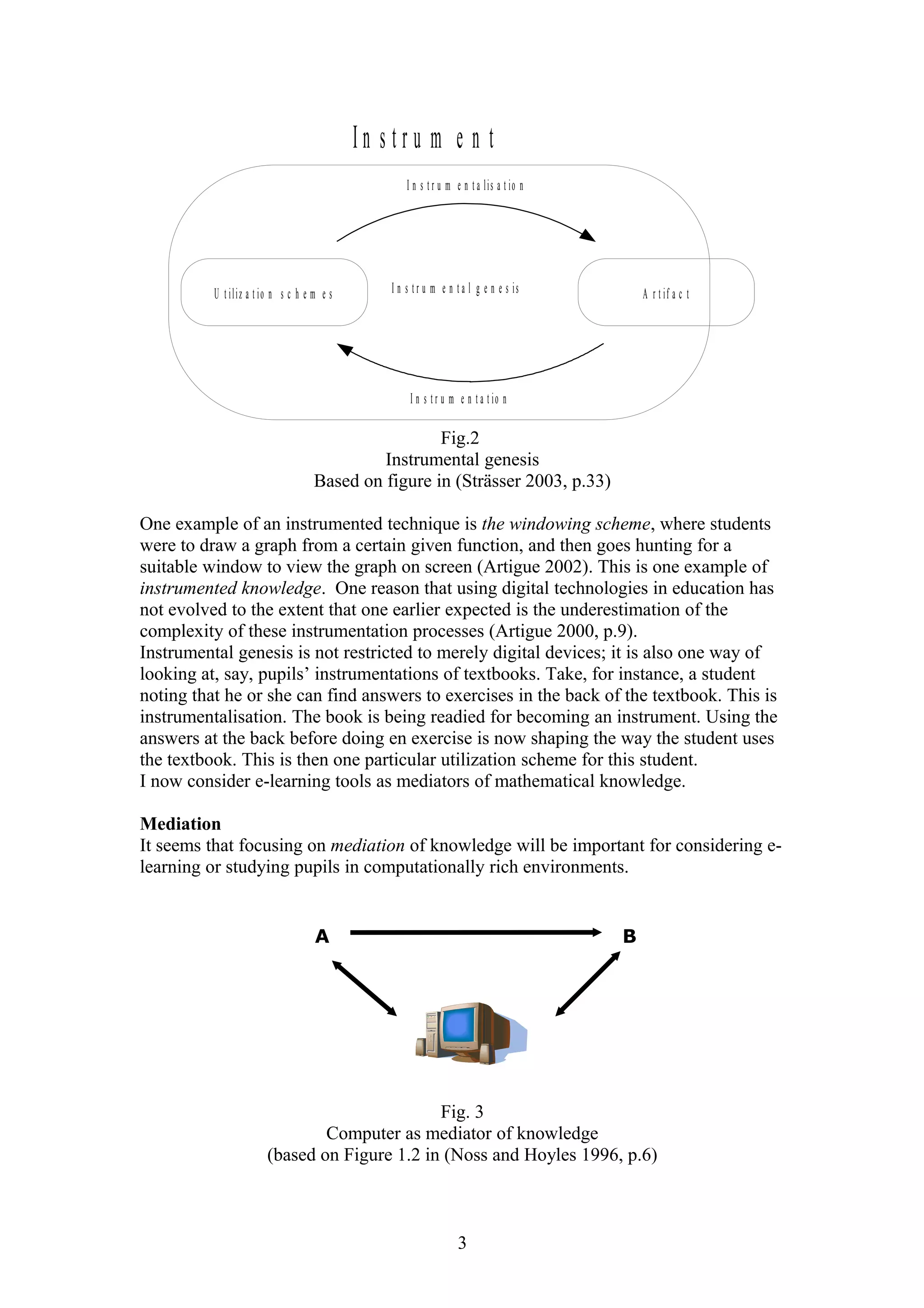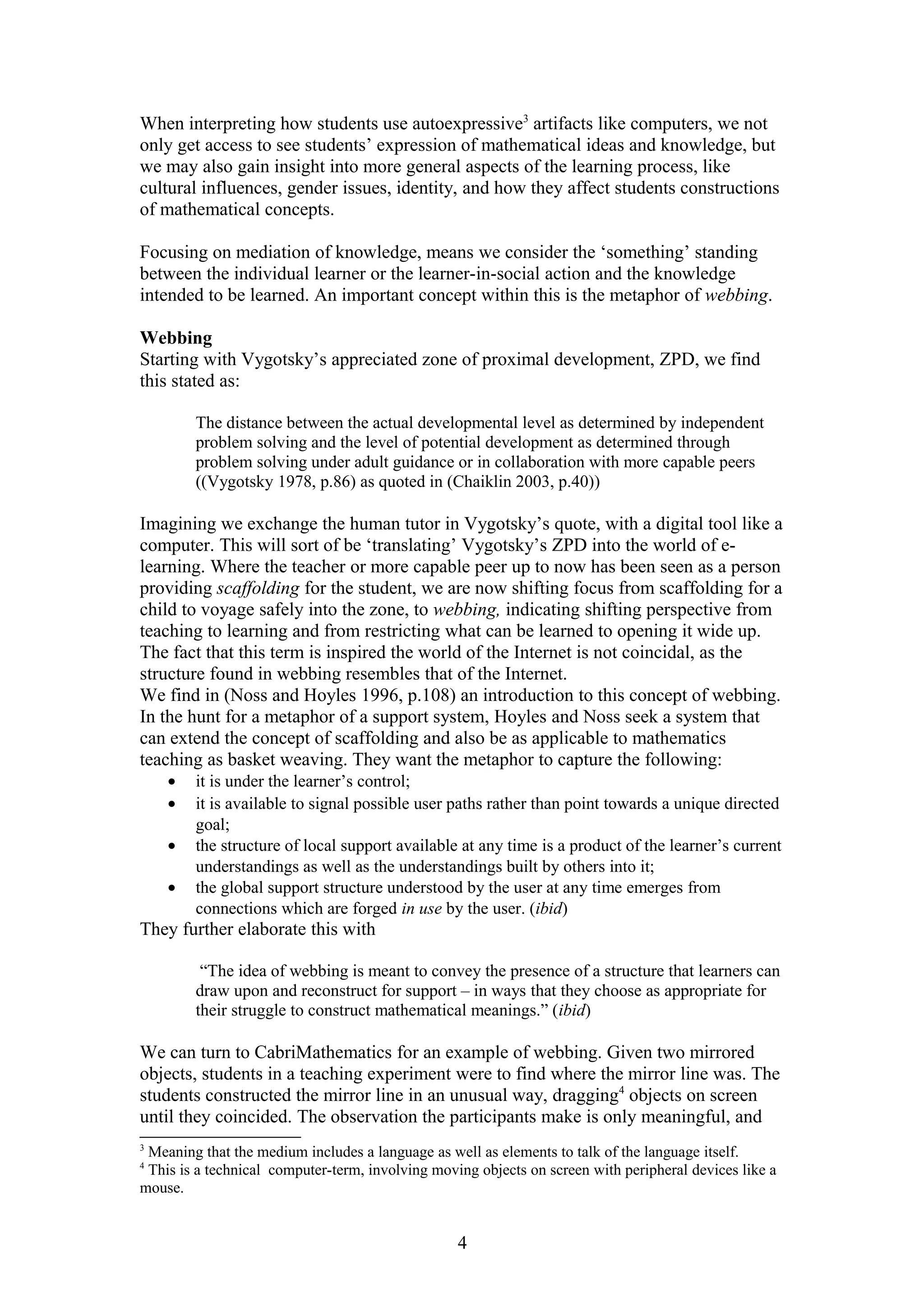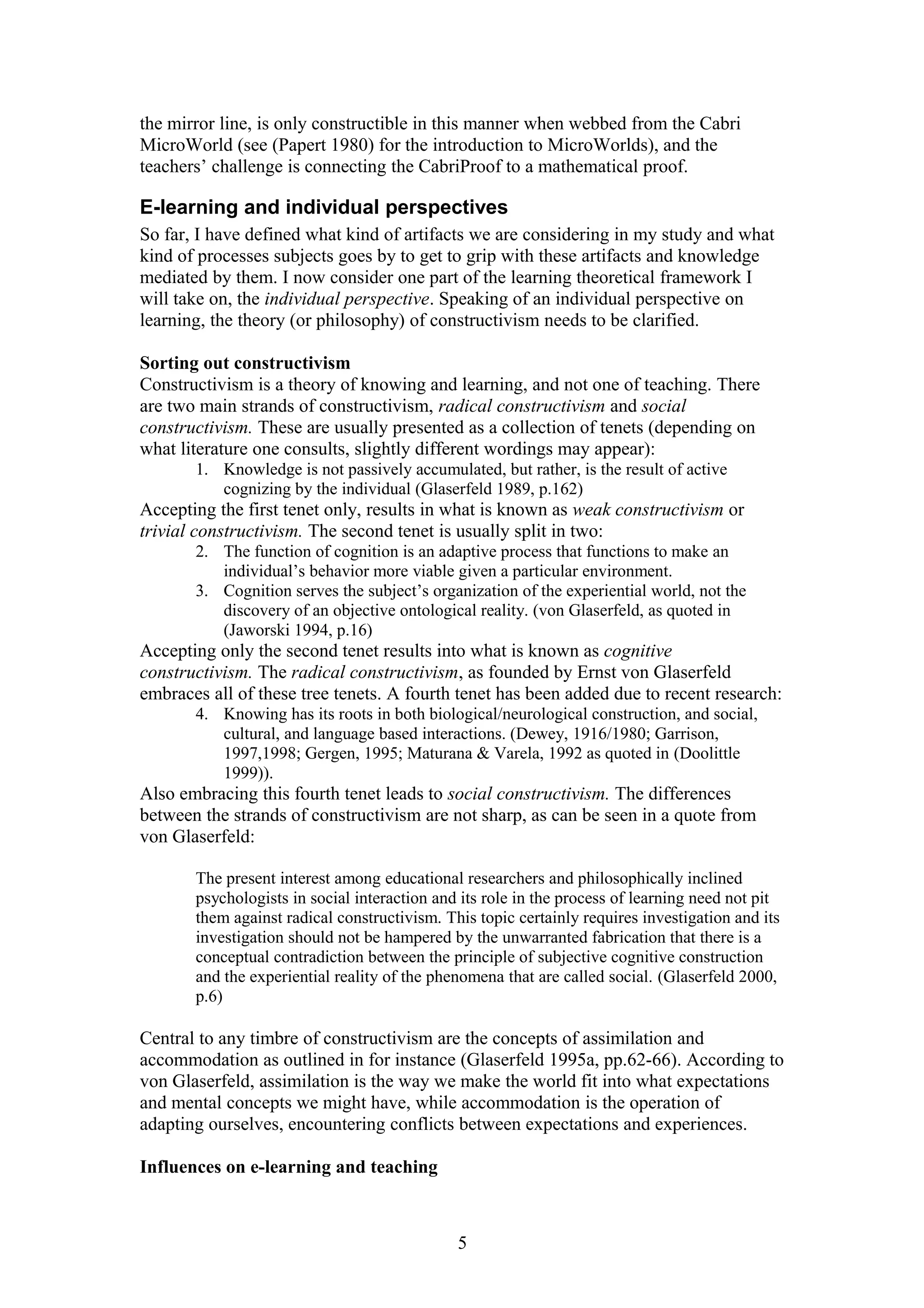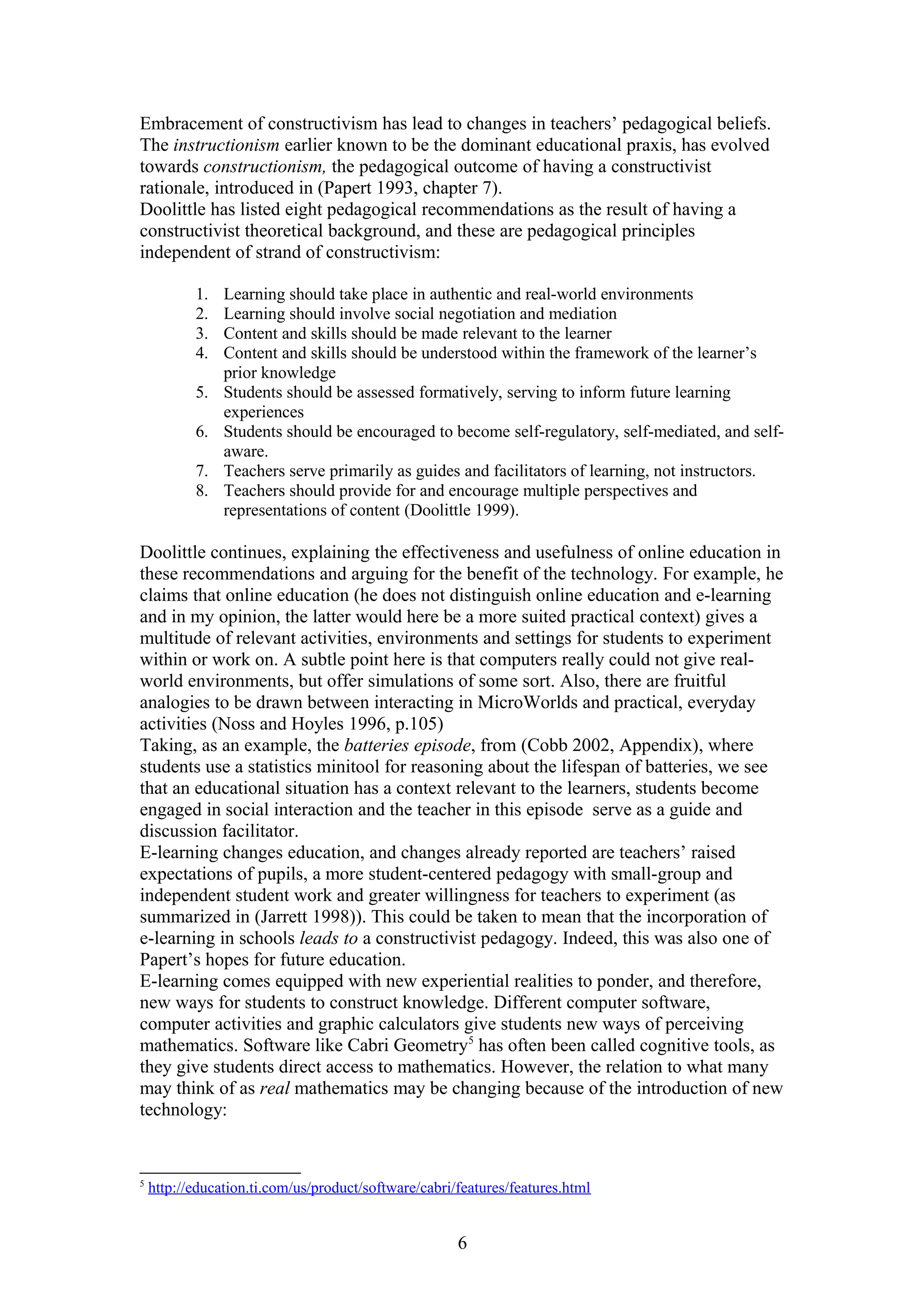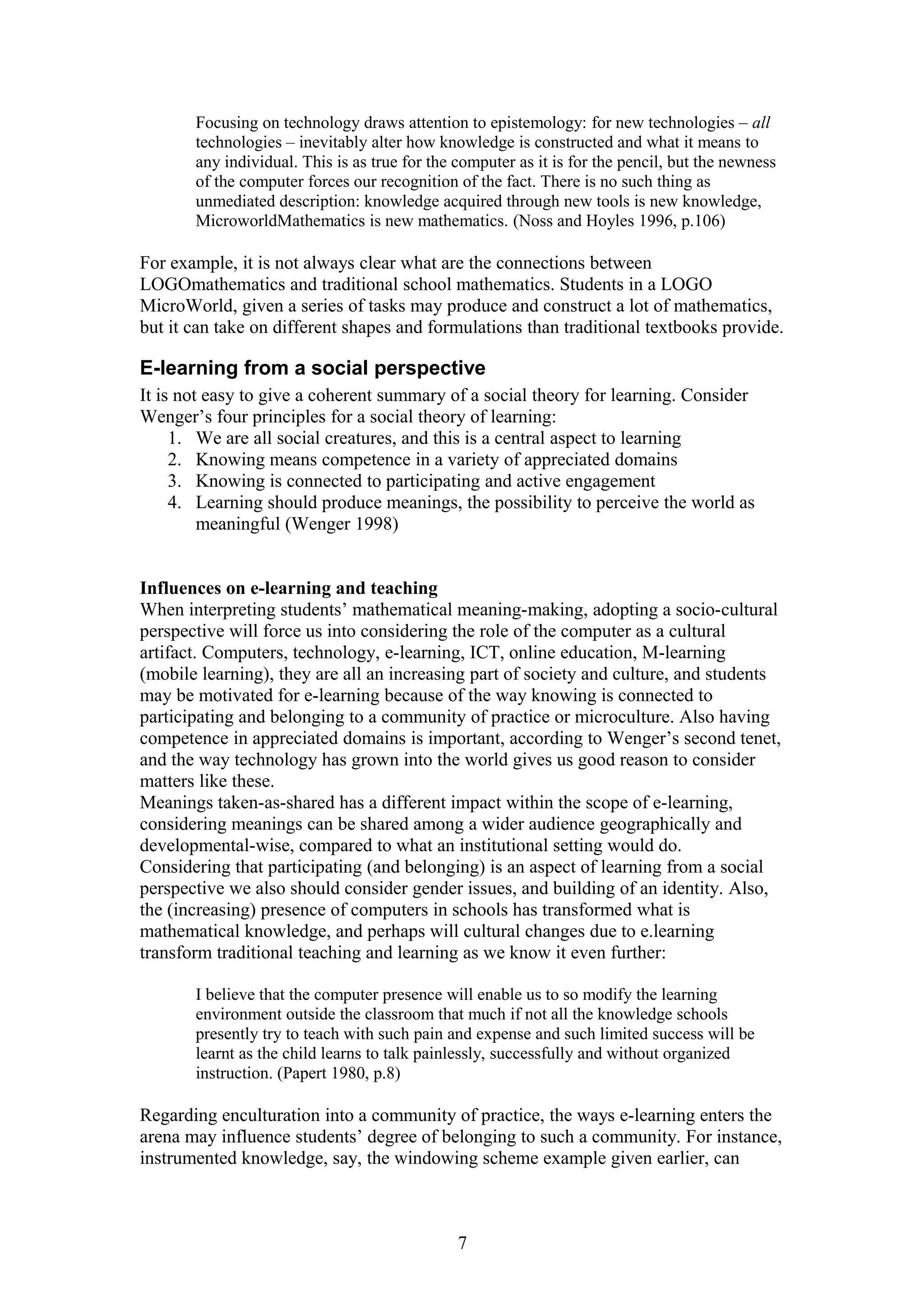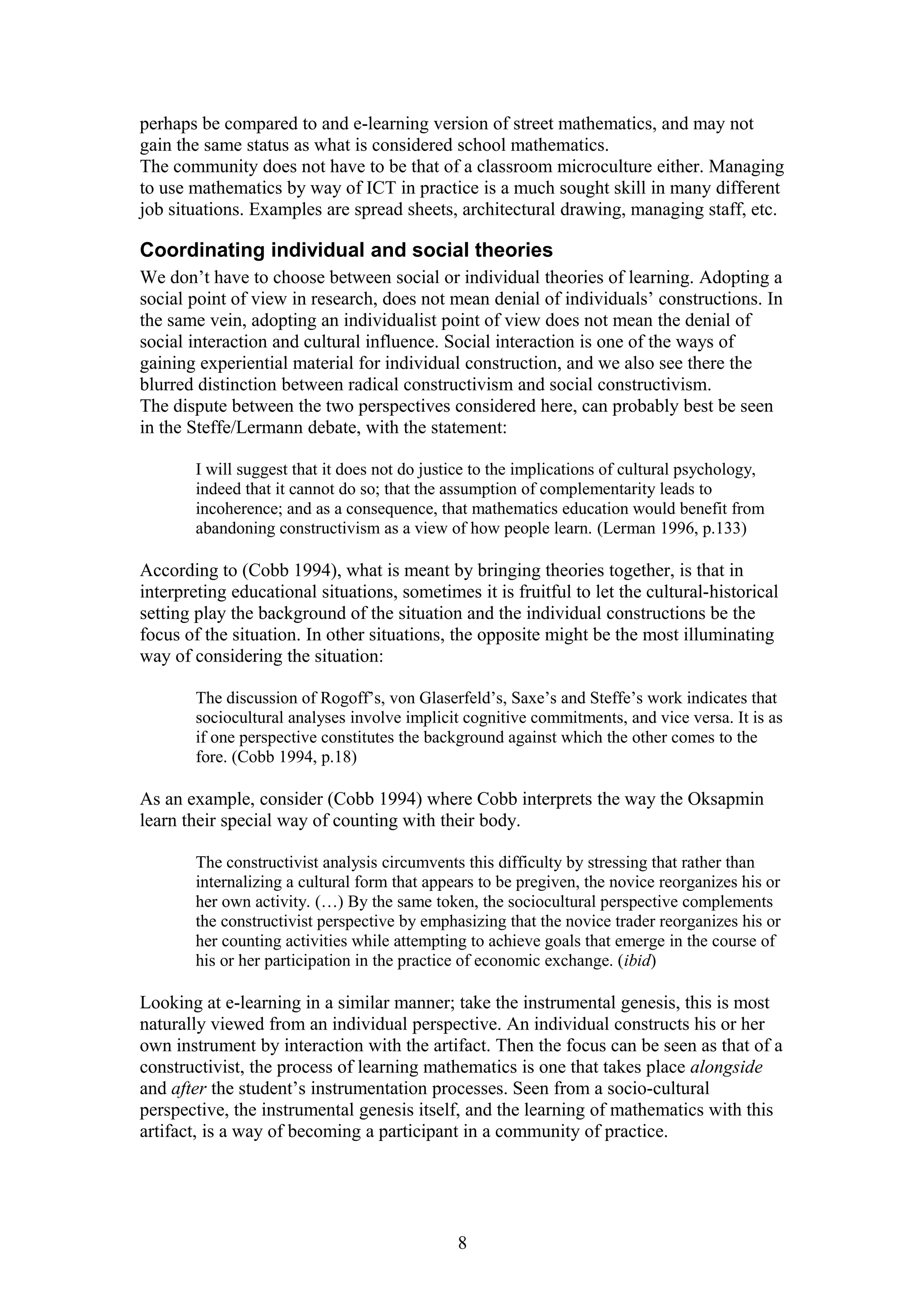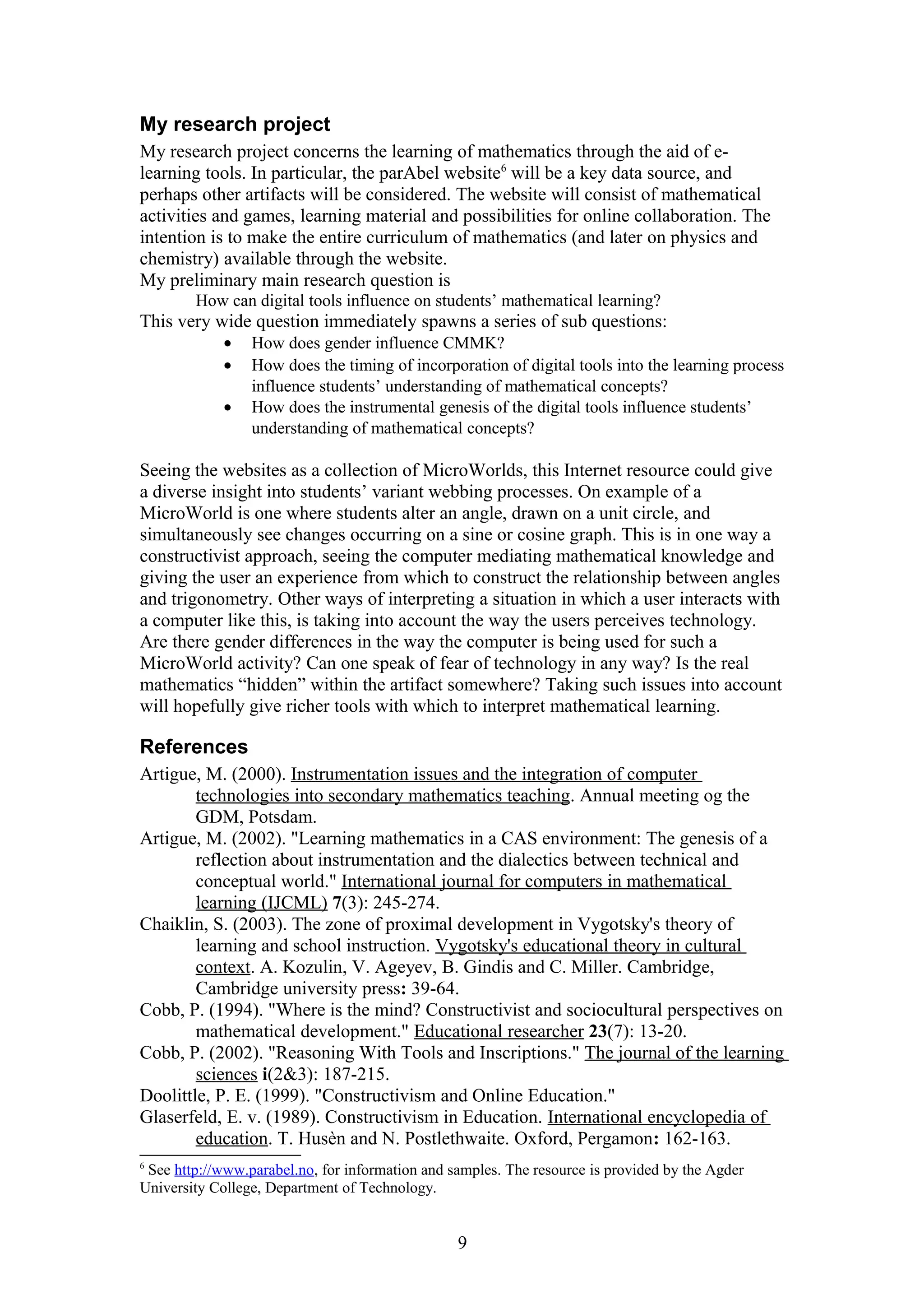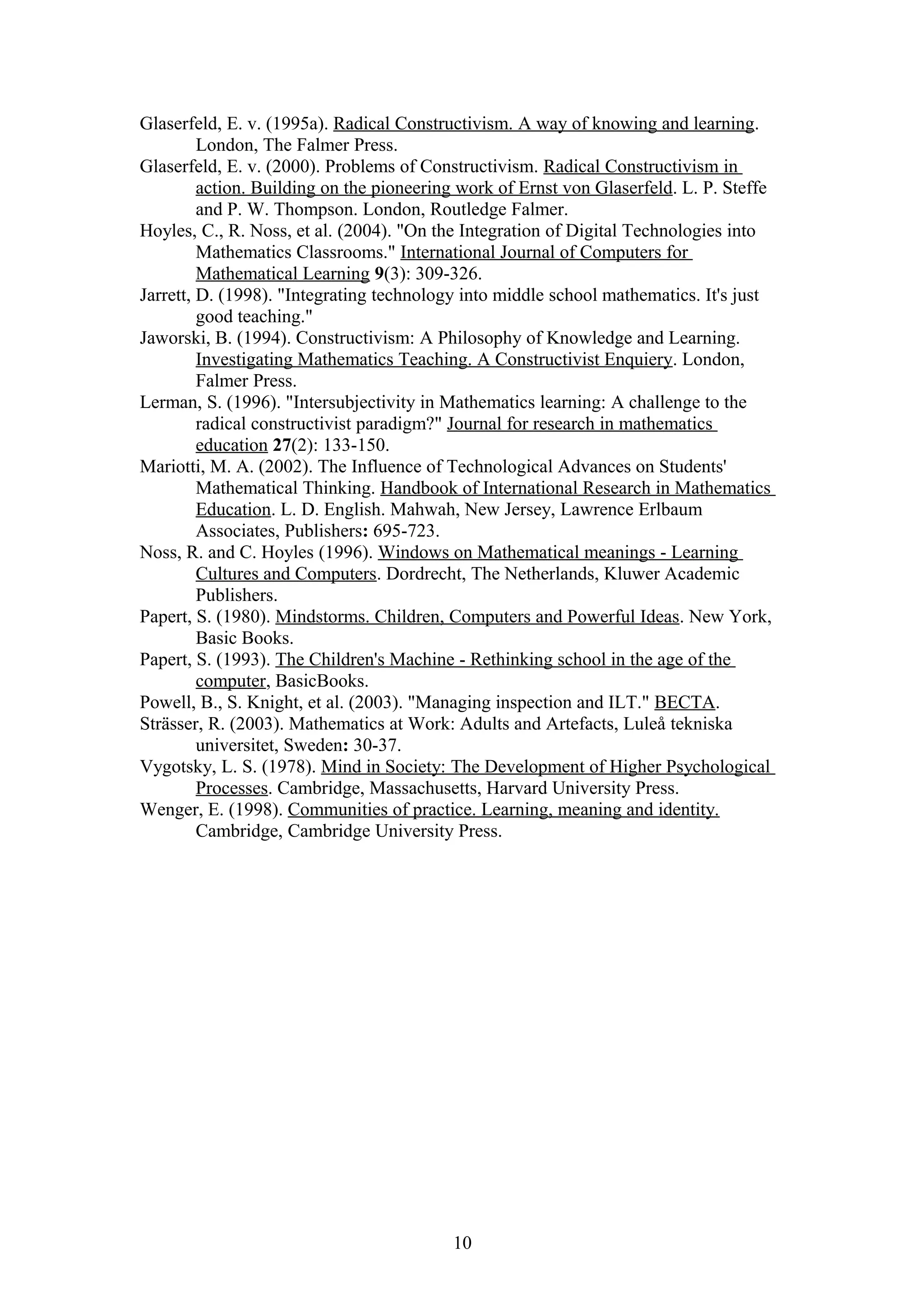This paper explores the integration of ICT in learning mathematics, focusing on e-learning and its theoretical foundations. It discusses concepts such as instrumental genesis and webbing, emphasizing the mediation of knowledge through digital tools, and highlights the importance of constructivist principles in educational practices. Furthermore, it addresses the evolving role of teachers and the influence of technology on students' understanding of mathematics.
